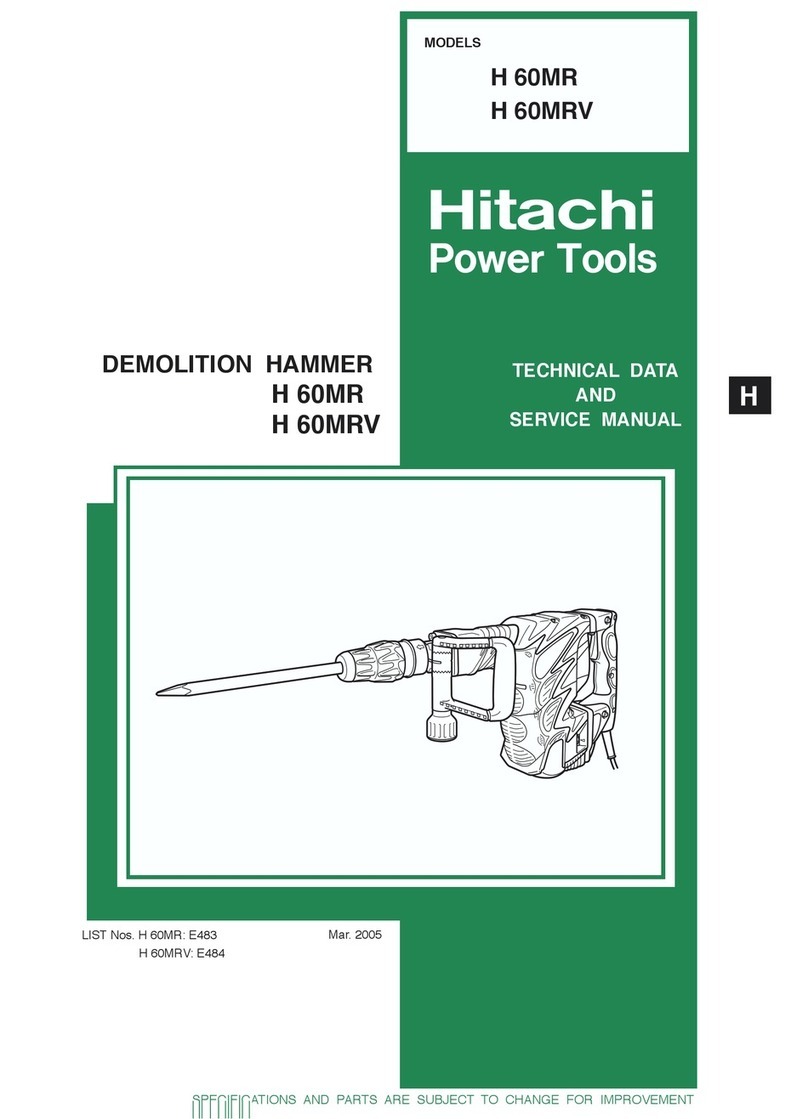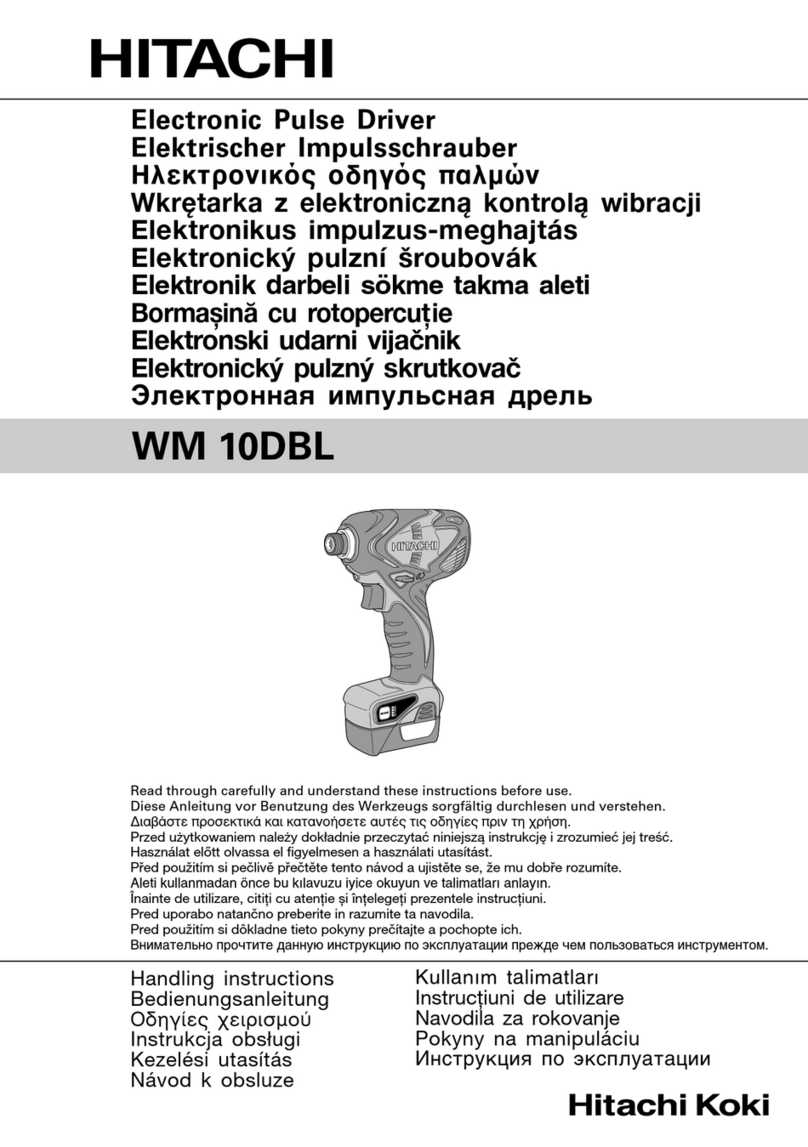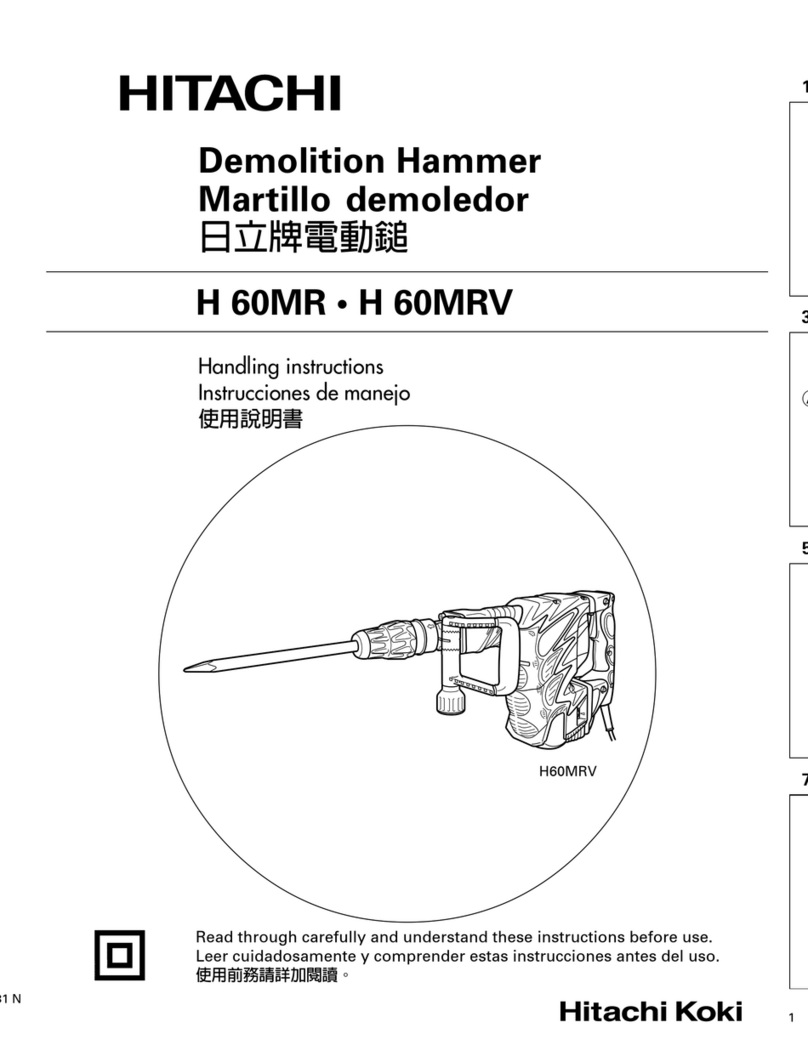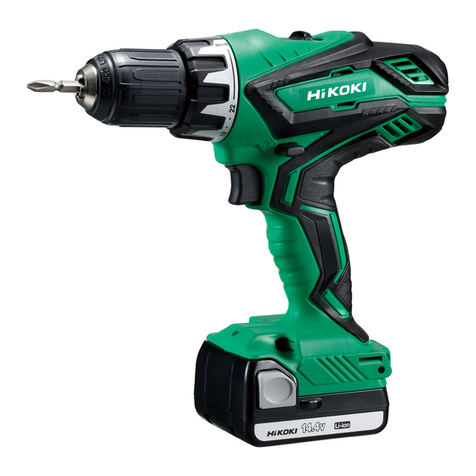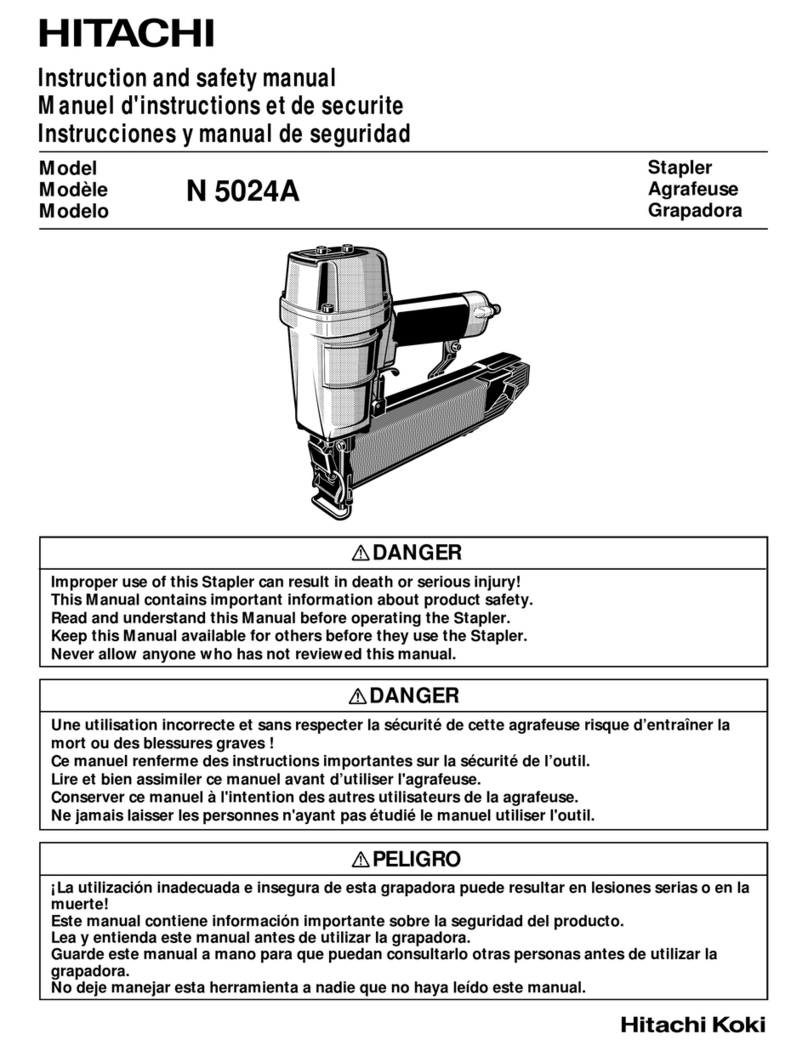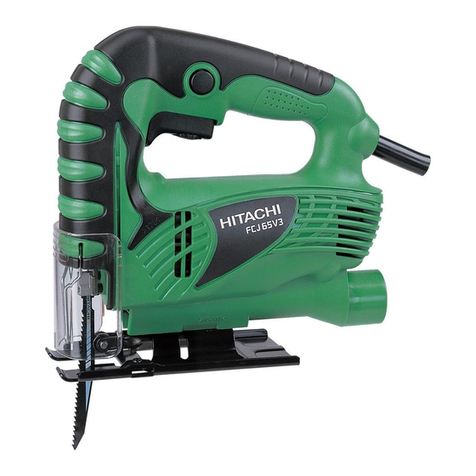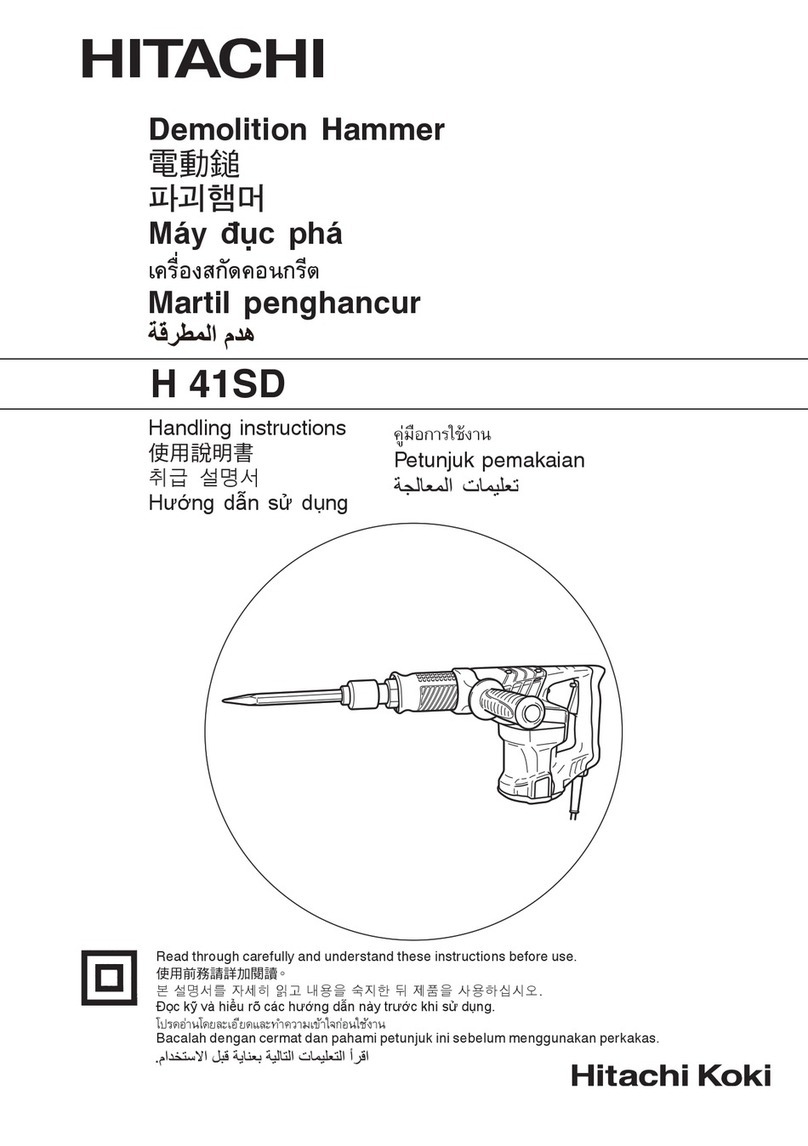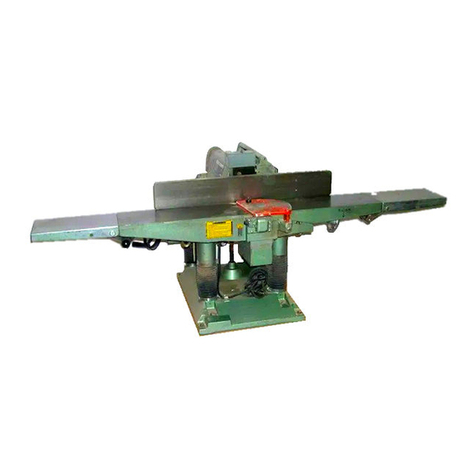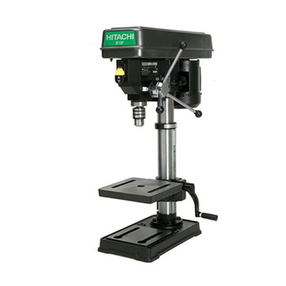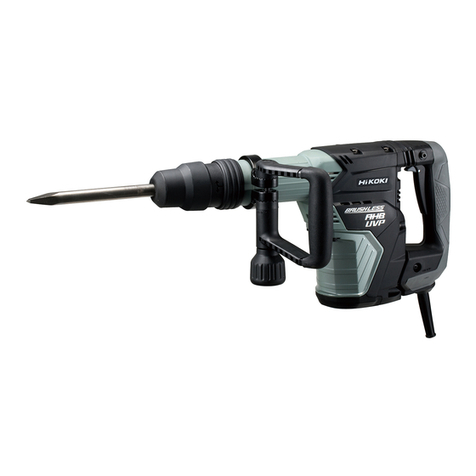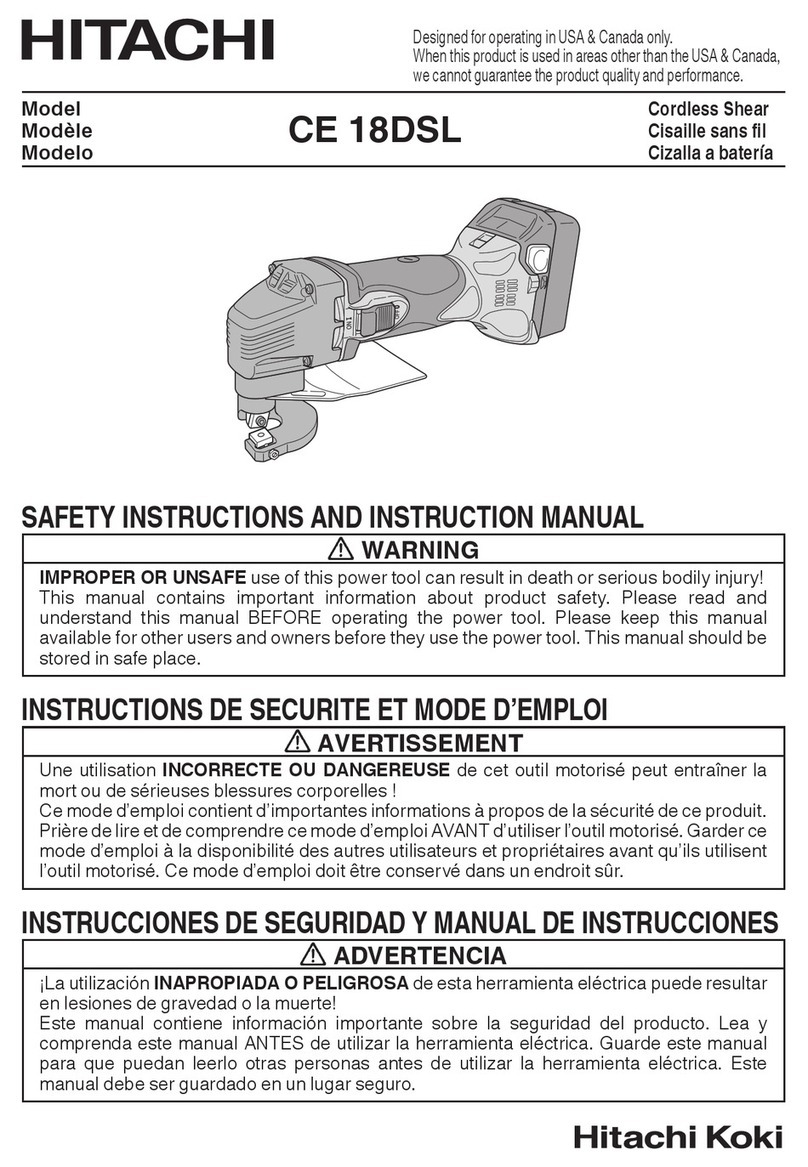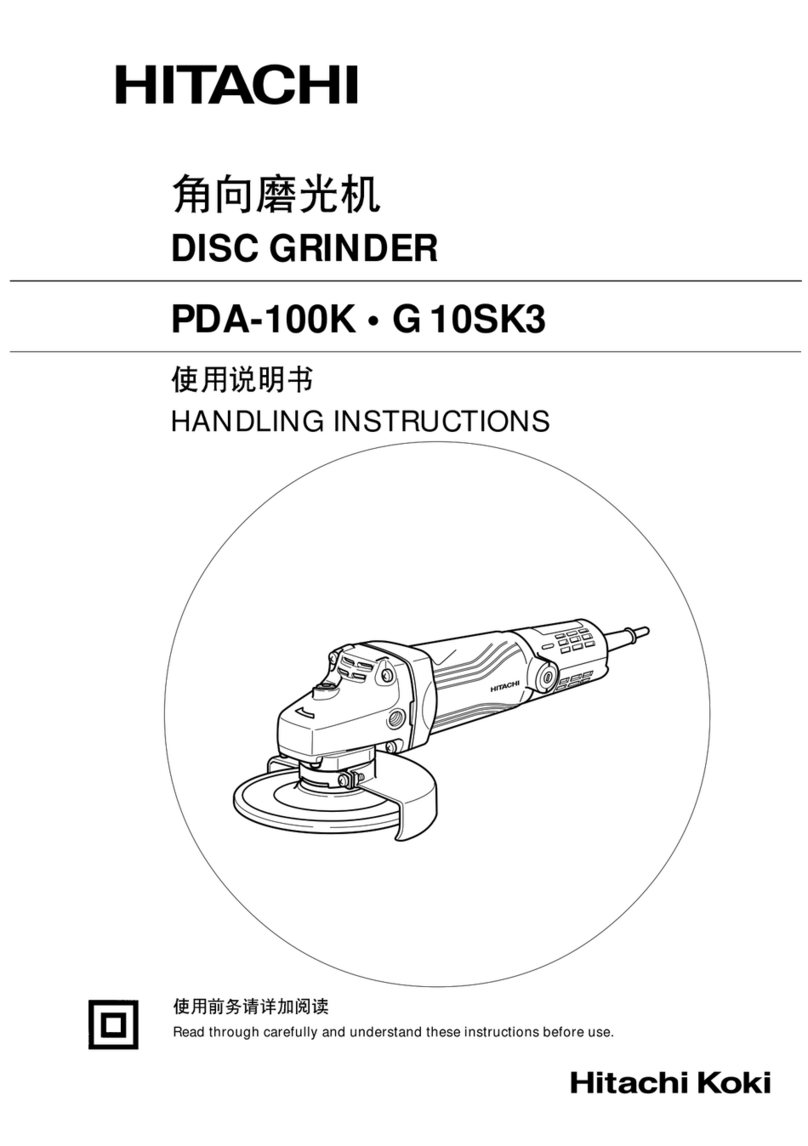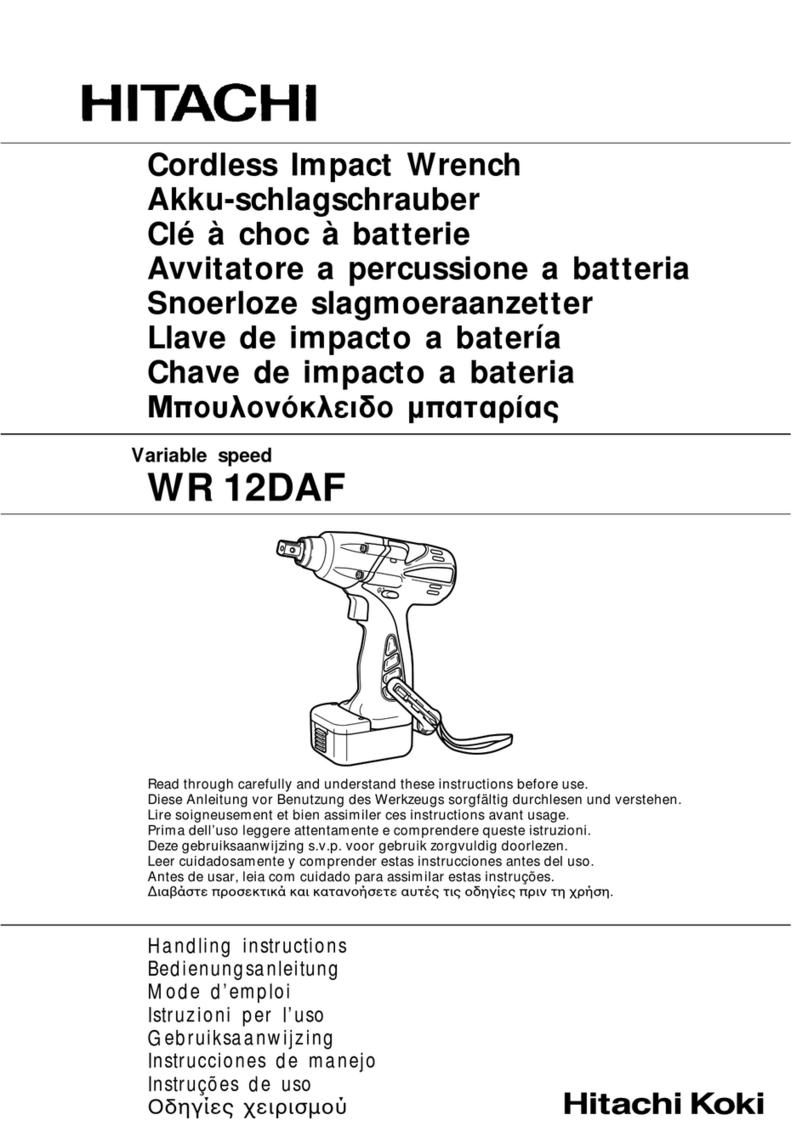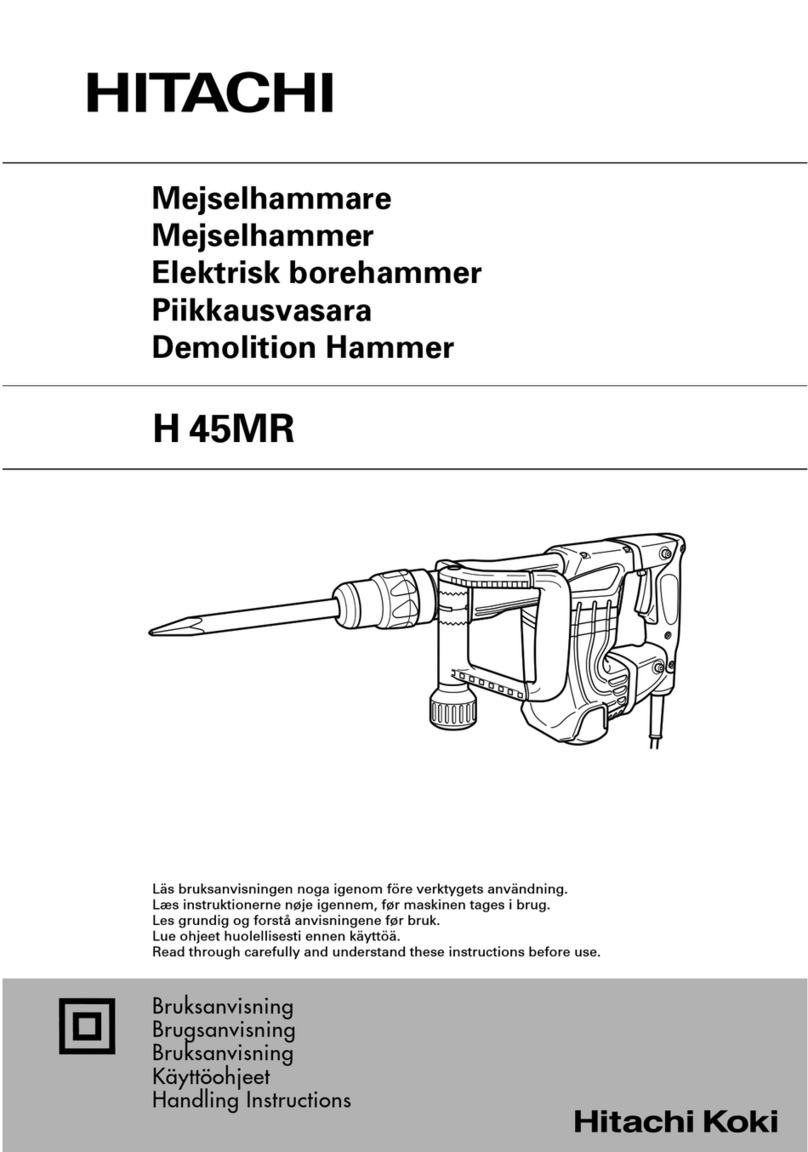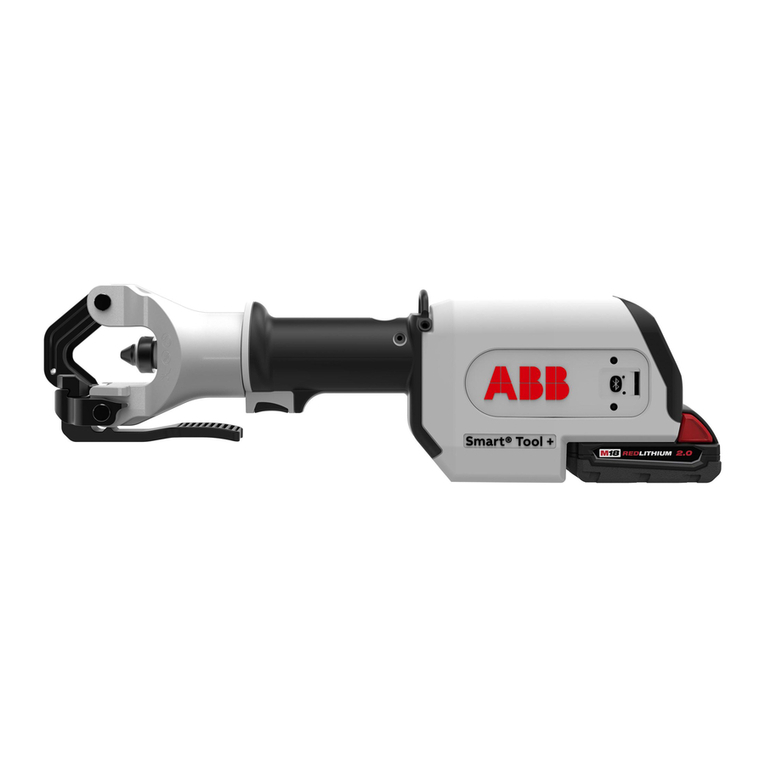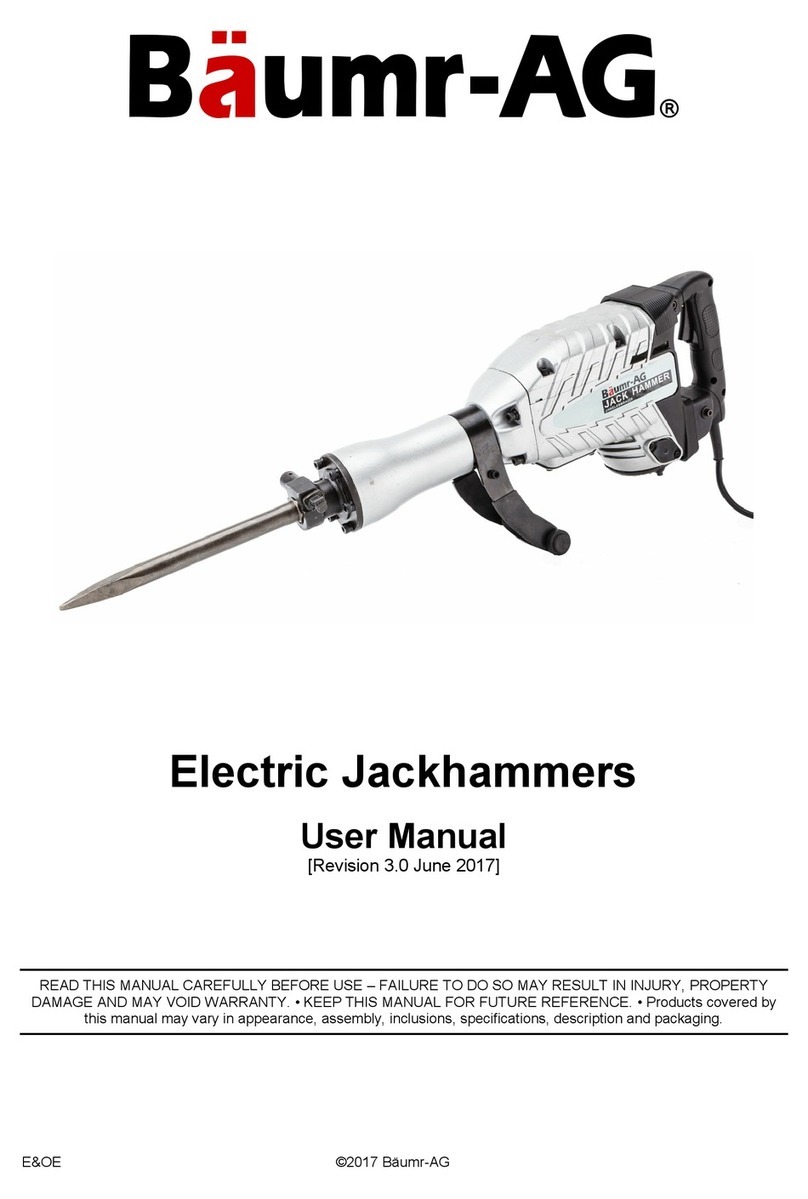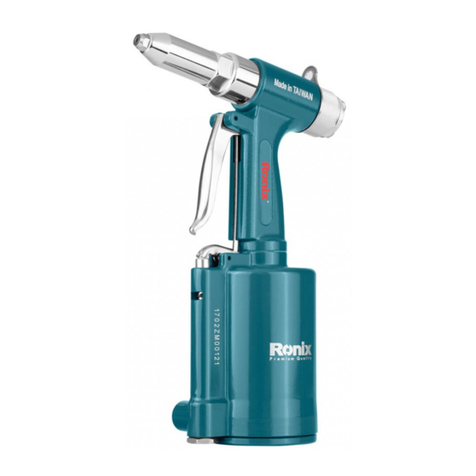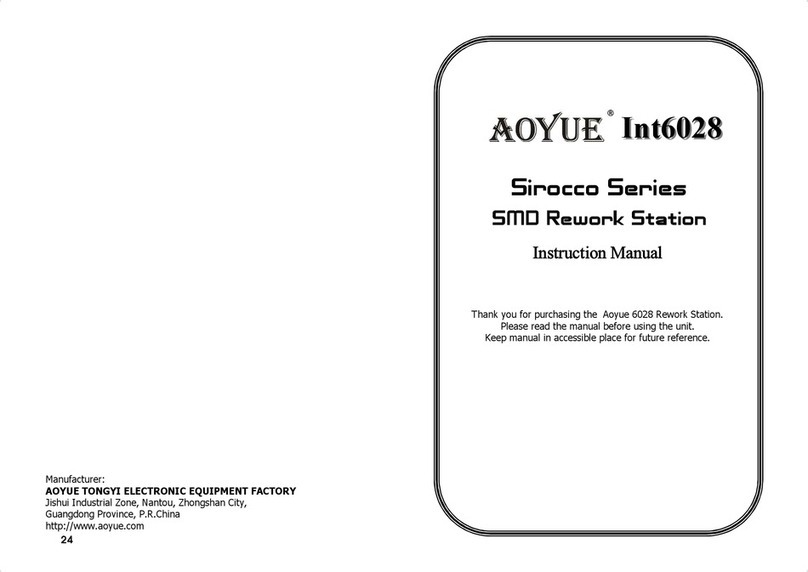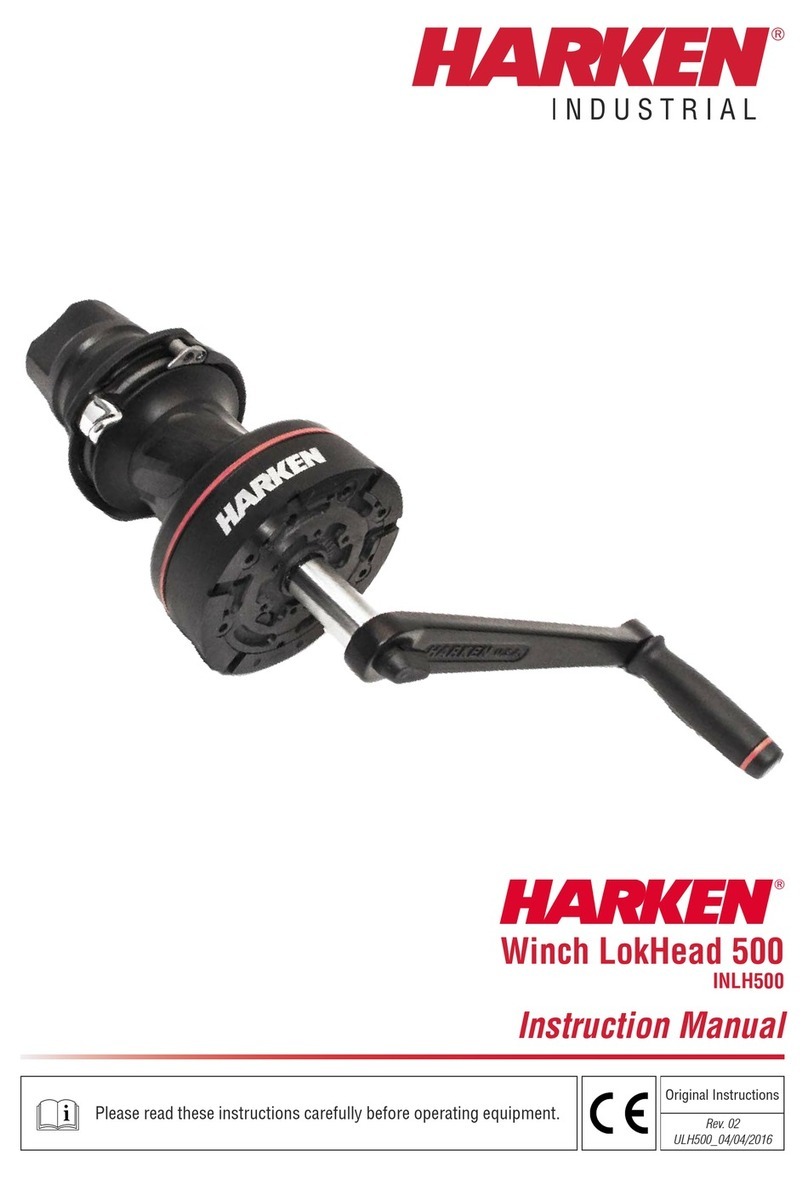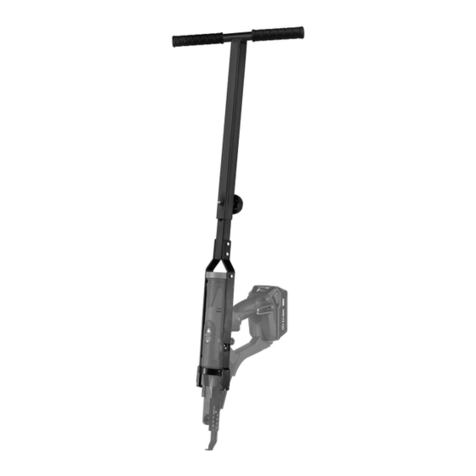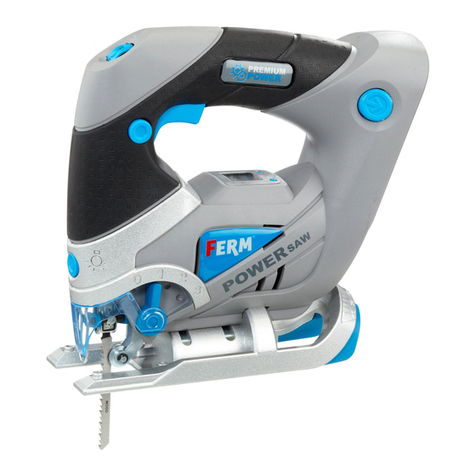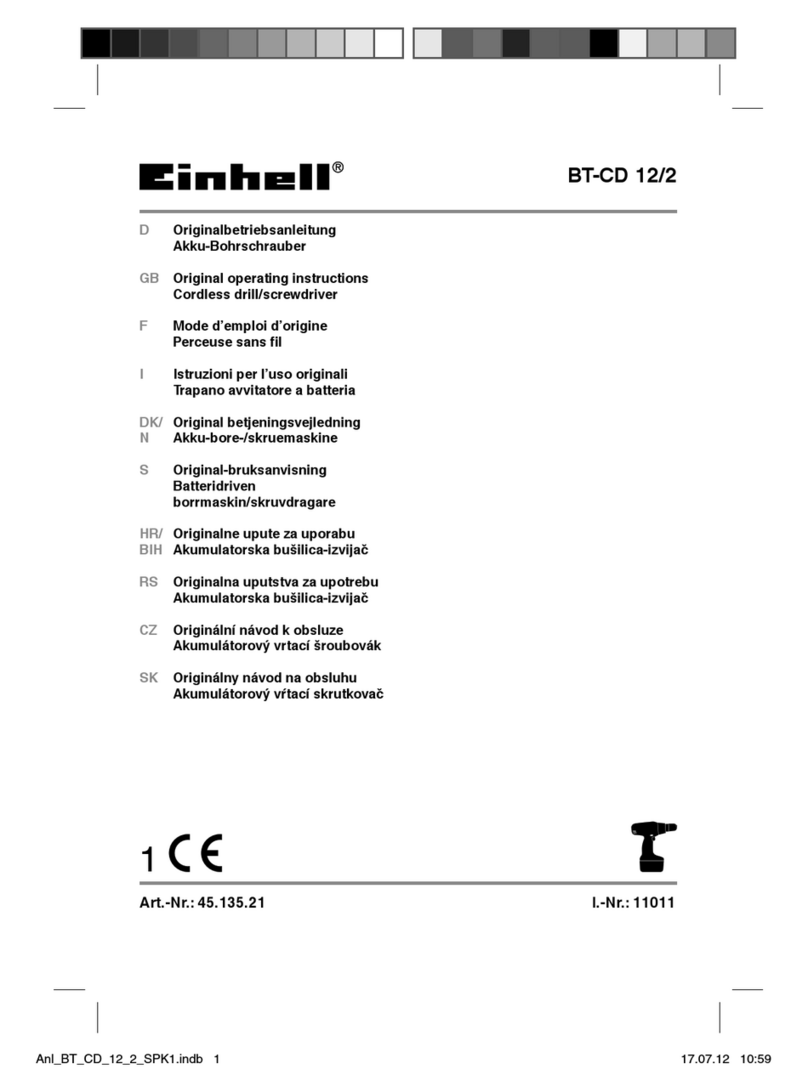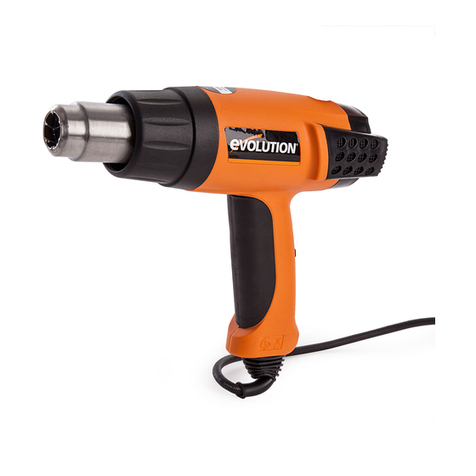
9
English
PRIOR TO OPERATION
1. Power source
Ensure that the power source to be utilized
conforms to the power requirements specified on
the product nameplate.
2. Power switch
Ensure that the power switch is in the OFF
position. If the plug is connected to a receptacle
while the power switch is in the ON position, the
power tool will start operating immediately, which
could cause a serious accident.
3. Extension cord
When the work area is removed from the power
source, use an ex tension cord of sufficient
thickness and rated capacity. The extension cord
should be kept as short as practicable.
INSTALLING AND REMOVING BITS
WARNING
Be sure to switch power OFF and disconnect the
plug from the receptacle to avoid serious trouble.
1. Installing bits
(1) Clean and insert shank of bit into the collet chuck until
shank bottoms, then back it out approximately 2 mm.
(2) With the bit inser ted and pressing the lock pin
holding the armature shaft, use the 23 mm wrench
to firmly tighten the collet chuck in a clockwise
direction (viewed from under the router). (Fig. 1)
CAUTION
○Ensure that the collet chuck is firmly tightened
after inserting a bit. Failure to do so will result in
damage to the collet chuck.
○Ensure that the lock pin is not inserted into the
armature shaft after tightening the collet chuck.
Failure to do so will result in damage to the collet
chuck, lock pin and armature shaft.
(3) When using the 8 mm diameter shank bit, replace
the equipped collet chuck with the one for 8
mm diameter shank bit which is provided as the
standard accessory.
2. Removing Bits
When removing the bits, do so by following the
steps for installing bits in reverse order.
CAUTION
Ensure that the lock pin is not inserted into the
armature shaft after tightening the collet chuck.
Failure to do so will result in damage to the collet
chuck, lock pin and armature shaft.
HOW TO USE THE ROUTER
1. Adjusting depth of cut (Fig. 2)
(1) Place the tool on a flat wood surface.
(2) Turn the quick adjustment lever in a counterclockwise
direction until the quick adjustment lever stops. (Fig. 3)
(3) Turn the stopper block so that section to which the
cutting depth setting screw on a stopper block is
not attached comes to the bottom of the stopper
pole. Loosen pole lock knob allowing the stopper
pole to contact with stopper block.
(4) Loosen the lock lever and press the tool body until
the bit just touches the flat surface. Tighten the
lock lever at this point. (Fig. 4)
(5) Tighten pole lock knob. Align the depth indicator
with the “0” graduation of scale.
(6) Loosen pole lock knob, and raise until indicator
aligns with the graduation representing the desired
cutting depth. Tighten pole lock knob.
(7) Loosen the lock lever and press the tool body
down until the stopper block to obtain the desired
cutting depth.
Your router allows you to finely adjust depth of cut.
(1) Attach knob to fine adjustment knob.
(2) Turn the quick adjustment lever in a clockwise
direction until the quick adjustment lever stops with
the stopper screw. (Fig. 5)
If the quick adjustment lever does not stop with
the stopper screw, the bolt screw is not properly
fitted.
If this occurs, slightly loosen the lock lever and
press down on the unit (router) hard from the top
and turn the quick adjustment lever again after
properly fitting the bolt screw.
(3) The depth of cut can be adjusted when the
lock lever is loosened, by turning the fine
adjustment knob. Turning the fine adjustment knob
counterclockwise results in shallower cut, whereas
turning it clockwise results in a deeper cut.
CAUTION
Ensure that the lock lever is tightened after finely
adjusting depth of cut. Failure to do so will result
in damage to the quick adjustment lever.
2. Stopper block (Fig. 6)
The 2 cut-depth setting screws attached to the
stopper block can be adjusted to simultaneously
set 3 dif ferent cutting depth. Use a wrench to
tighten the nuts so that the cut-depth set ting
screws do not come loose at this time.
3. Guiding the router
WARNING
Be sure to switch power OFF and disconnect the
plug from the receptacle to avoid serious trouble.
(1) Template guide adapter
1Loosen the 2 template guide adapter screws, so
that the template guide adapter can be moved. (Fig. 8)
2Insert the centering gauge through the hole in the
template guide adapter and into the collet chuck. (Fig. 9)
3Tighten the collet chuck by hand.
4Tighten the template guide adapter screws, and
pull out the centering gauge.
(2) Template guide
Use the template guide when employing a template
for producing a large quantity of identically shaped
products. (Fig. 10)
As shown in Fig. 11, to install insert template
guide in center hole in template guide adapter with
2 accessory screws.
A template is a profiling mold made of plywood
or thin lumber. When making a template, pay
particular attention to the matters described below
and illustrated in Fig. 12.
When using the router along the interior plane
of the template, the dimensions of the finished
product will be less than the dimensions of the
template by an amount equal to dimension “A”, the
difference between the radius of the template guide
and the radius of the bit. The reverse is true when
using the router along the exterior of the template.
000BookM12V2Asia.indb9000BookM12V2Asia.indb9 2015/04/2112:30:402015/04/2112:30:40


